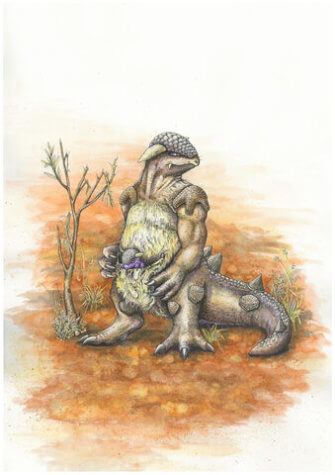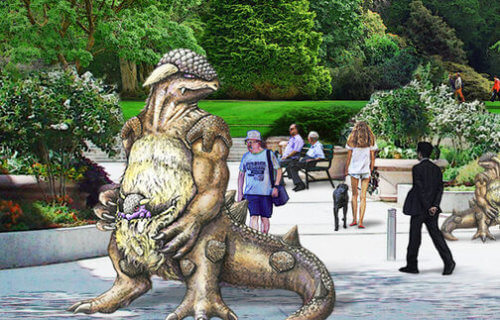OKINAWA, Japan — April Fools’ Day has become a day not just for friends to prank each other, but for big-name organizations to get in on the fun too. While most gags are easy to spot, it’s hard to tell if scientists in Japan are being serious or not. Their new study reveals climate change and poaching are serious challenges facing a species common in Australia. However, that species is a two-meter-tall Pokémon!
Growing concern over kangaskhan?

Katerina Zapfe)
Researchers from the Okinawa Institute of Science and Technology Graduate University (OIST) claim kangaskhan are endemic to Australia. For those who don’t know much about the Japanese phenomenon, this particular character looks like an armored version of a kangaroo. They even have their own pouch for their young just like the real Australian native. Whether they did it for April Fools’ or not, researchers took a deep look at how climate change “will impact the existence of suitable habitat” of kangaskhan.
“Apart from seeming to prefer partly cloudy weather, very little is known about the species’ climatic preferences,” says lead author Dr. Dan Warren in a university release. “This makes it difficult to estimate the response of kangaskhan to environmental change, or how climate change might combine with the effects of poaching to impact the species’ long-term survival. For this research, we used several well-known modeling methods to gain insight into how threatened kangaskhan really are.”
While there obviously are no Pokémon running around in real life, the light-hearted report models how human behavior can put stress on any kind of species around the globe. Researchers even detailed how animal poaching threatens kangaskhan adults and their eggs.
“It’s a bit silly but it’s also cool science,” Dr. Warren admits. “Stakeholders use these models for predicting a number of important ecological phenomena, from the effects of climate change, to the dispersal of diseases and invasive species, so having a firm understanding of the biases the models might have is important. We’ve just scratched the surface of what we can do with this method so I think this could be a useful tool for a whole bunch of things.”
So how are humans ‘endangering’ Pokémon?
In three different climate change models, scientists predicted various ways climate shifts will decrease the amount of suitable habitats kangaskhan have. Two other models had conflicting results and a sixth model actually finds the Australian Pokémon will have more suitable land to roam on in the future. Each of the models examined future estimates of CO2 emissions and the role humans will play in that.
As for poaching, the study finds the primary motivation of poachers is to use kangaskhan in fighting contests. For those who have never played Pokémon, humans collect these creatures to form teams which then “battle” in fighting contests. Like real life animals captured and used in blood sports, researchers say poaching contributes to a “bleak outlook” for kangaskhan.
Although Warren uses fiction to do it, his point has plenty of basis in reality. Previous studies predict that hundreds of species worldwide may go extinct in the next few decades due to both climate shifts and the illegal wildlife trade. Even as people “go green,” suitable habitats for wildlife are also drying up as growing populations take up more land.
“It’s specifically based around over-exploitation with the tagline ‘gotta catch them all.’ The rarer they get, the more valuable they get. This is like some of the larger tuna species, which are in serious danger of going extinct. We might have focused on climate change in this study but, for many Pokémon (and many species around the world), overexploitation should also be a concern,” Warren concludes.
The study really appears in the journal Methods in Ecology and Evolution.
